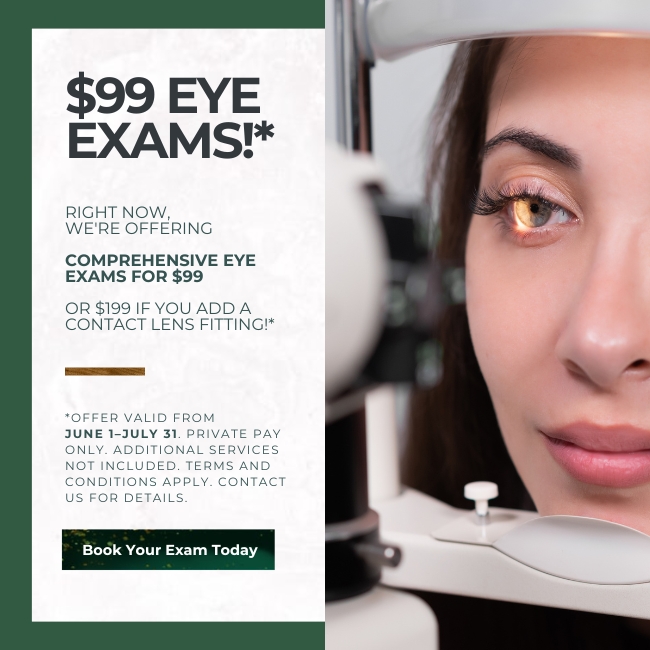Your child’s schoolwork, leisure, socializing, and more are becoming increasingly digital, and while screens can be a powerful tool for learning and expression, they can also affect their eyes. Children use screens earlier than ever, and many school-aged children have their own devices.
As a parent to a unique generation, it isn’t easy to navigate digital screen use at home. Studies are continuously ongoing, and parents are being buried in information, making it difficult to keep up.
When it comes to your child’s eyes, screens have been proven to cause problems like digital eye strain, increased nearsightedness, and sleep problems. But there are things you can do to help minimize the adverse effects of extended screen use on your child’s eyes.
Screens aren’t going anywhere, so your child’s eye care must adapt to the changing environment. At Pacific Pier Optometry, we recommend annual children’s eye exams to monitor changes in their vision, help manage eye discomfort, and regularly assess their overall eye health.
Effects of Digital Screens Affect on Child’s Eyes
You may notice discomfort in your eyes as you work long hours on your devices—children can experience similar symptoms. And since their eyes are still growing, these effects can potentially impact their vision as they age.
Digital Eye Strain
Digital eye strain isn’t a single eye condition but a cluster of symptoms ranging from dry eyes, blurry vision, headaches, and eye irritation. People of all ages blink significantly less when working at a screen than they otherwise would, leaving their eyes feeling dry and gritty.
Eye Fatigue
When your child complains of headaches, eye pain, tiredness, or headaches, they may be experiencing eye fatigue related to screen use. When the eye’s focusing muscles are overworked from near-focus computer tasks, your child can experience eye discomfort or vision dimness.
Whether they’re playing a video game, doing homework, or reading on their screen, the intensity to which kids can focus on their screen is a significant contributor to eye fatigue.
Myopia (Nearsightedness)
Myopia, or nearsightedness, is becoming increasingly common, and some evidence suggests a link between skyrocketing myopia and prolonged near-focused work, like on digital screens. Even non-digital close-up tasks, like reading or drawing, can affect myopia progression in children. Indoor activities might be more detrimental to your child’s vision, so incorporating outdoor play can have positive outcomes.
How Parents Can Help
When your child is in a learning environment, their screen time is further outside your control, but when they’re home and it’s their leisure time, you make the screen time rules.
There’s no universally accepted amount of time determined to be too much screen time. Screen time will be unique for kids of different ages and circumstances, but helping your children practice good digital screen habits can help protect their vision and eyes from irritation.
Monitor Screen Time
Some parents stick to a firm plan to monitor media use, while others take it day by day. Screen time can impact your child’s health in ways indirectly related to their eyes, such as sleep disturbances and heightened risk of obesity.
It’s critical that your child gets enough sleep, with bedtime hours free of screens and at least 60 minutes of exercise a day. Some experts recommend limiting non-school-related screen time to under 2 hours a day.
Encourage Breaks
Children often lose track of time; some can go hours wholly absorbed in a task or activity without blinking an eye. Try to teach your child the 20-20-20 rule to build a habit of taking breaks to rest their eyes. By focusing on an object 20 feet away, for 20 seconds, every 20 minutes, they can help shift their eye’s focus to counteract the intensity of close-up work.
Position the Screen
Ergonomics are essential for comfortable computer use, but if you have a home desktop your child uses, double-check that it’s not only set up for grown-up use. Children need their computer screens to be slightly below eye level to prevent dry eye and eye fatigue that comes with looking upward at a screen.
Get Regular Eye Exams for Your Child
Screen time is necessary for your child to excel in school and stay current on the latest technology. However, if you’re concerned about the effects screens have on your child’s eyes, schedule a visit at Pacific Pier Optometry.
During a comprehensive eye exam, we’ll test vision, examine ocular structures, and listen to your concerns and their symptoms to help make their off-screen time healthy and comfortable.



